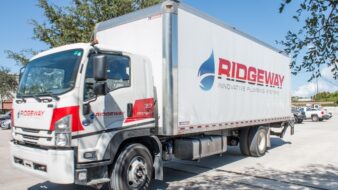Baltimore — John Galyen, president, Danfoss North America, addressed energy productivity at the Alliance to Save Energy’s Energy 2030 On the Road on Monday, Sept. 29, 2014 in New York City. Galyen participated in a panel titled “Modernizing Regulations and Infrastructure to Improve Energy Productivity” and addressed several key issues that will impact the Energy 2030 initiative’s goal of doubling energy productivity by 2030.

According to the Alliance to Save Energy, achieving the Energy 2030 goal would save $327 billion annually in avoided energy costs, create 1.3 million jobs, reduce imports to a mere 7 percent of overall energy consumption, and lower greenhouse gas emissions to 1/3 below the level emitted in 2005.
During the panel, Galyen emphasized that while current efforts are necessary to achieve the 2030 goal, there are four critical needs moving forward:
• Supportive regulations and standards
• A focus on renewables, demand response, and energy storage that will redefine the grid-building relationship
• Broader deployment of existing energy-efficient technologies
• A whole building approach
“Both short- and long-term approaches are needed to double energy productivity by 2030,” Galyen suggested. “Progress is being made with regulations and standards, but we are approaching technological efficiency limits. The short-term approach will take advantage of available, proven, yet under-deployed technologies, such as variable speed, energy recovery, and renewables.”
For example, a recent study conducted by the U.S. General Services Administration’s Green Proving Ground program and the Pacific Northwest National Laboratory found that, when one of two existing 150-ton rotary screw chillers was replaced at a Federal U.S. office building and courthouse with a 150-ton variable speed, oil-free centrifugal chiller using Danfoss Turbocor variable speed technology, there was a significant decrease in electricity consumption, resulting in energy savings of 42%.
“Long term, we must adopt an integrated approach to whole buildings, communities of buildings, and the grid that serves them, and advocate for supportive and complementary regulations and standards,” he said. Citing an overall increase in energy demand and stress placed on the grid, Galyen suggested the grid-building relationship needs to change, including the role of utilities. A new approach will require recovery and reuse of energy, energy storage, and use of renewable energy at the building and community level.
Galyen also emphasized that the long-term strategy will require a new and holistic approach to research and development, building design, building codes, building labelling and ratings, financing mechanisms, and a shift in utilities’ role.
Co-hosted by the Alliance to Save Energy and Northeast Energy Efficiency Partnerships (NEEP), Energy 2030 On the Road is an education, outreach, and action campaign aimed at urging communities throughout the nation to adopt the goal of doubling energy productivity by 2030. The Energy 2030 initiative is organized around three pillars, which set the agenda for the Sept. 29 event: invest in energy productivity throughout the economy; modernize regulations and infrastructure to improve productivity; and educate and engage consumers, workers, business executives and government leaders on ways to drive energy productivity gains. Previous campaign stops from Seattle to Atlanta have already resulted in the endorsement of nearly 100 elected officials, business, universities, and other stakeholders.
Danfoss was a sponsor of Energy 2030 On the Road.
To learn more about Energy 2030, visit https://www.ase.org/policy/energy2030.




Join the conversation: